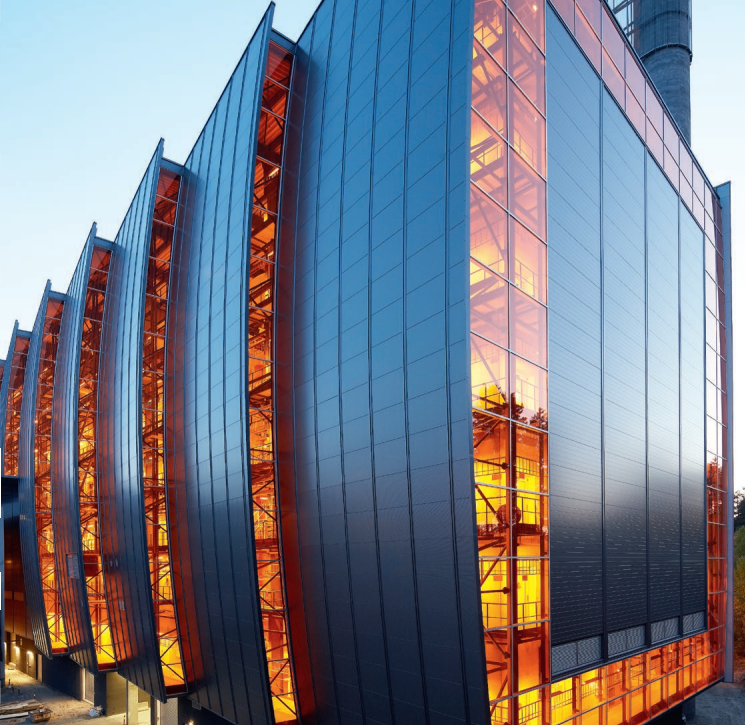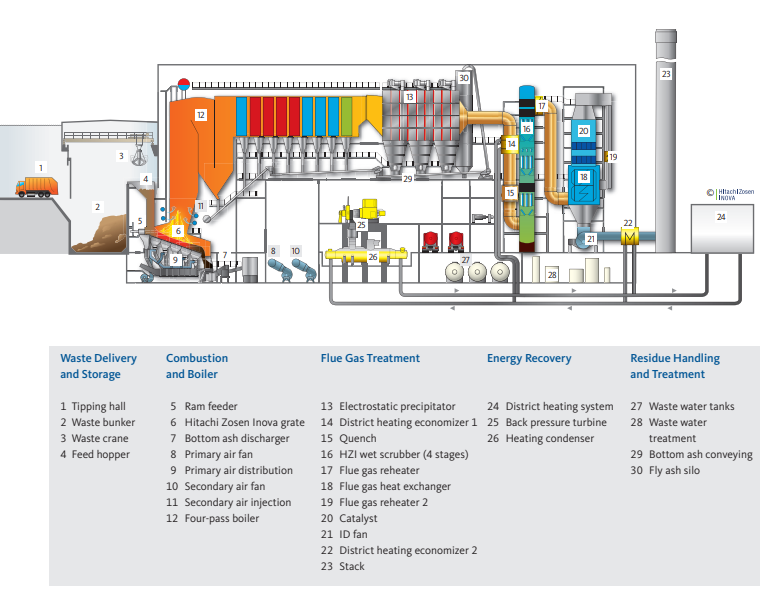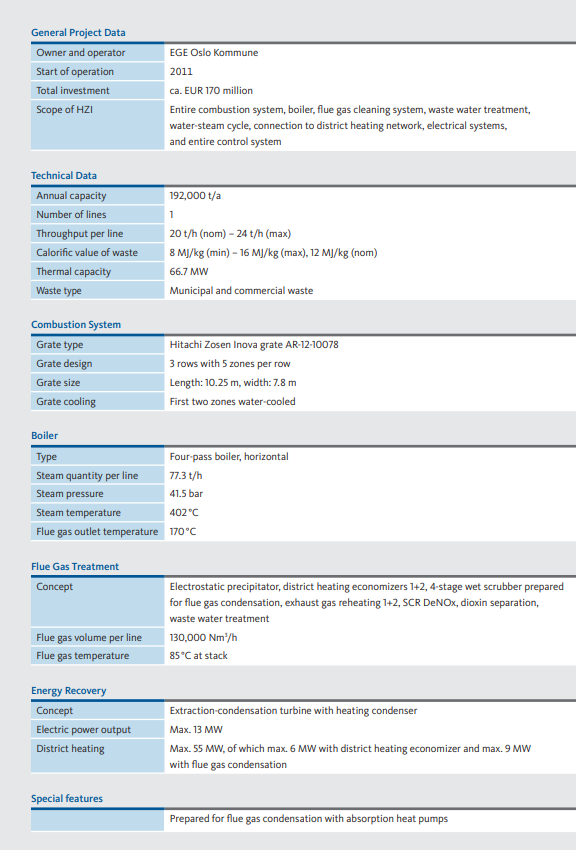Oslo / Norway
Oslo / Norway
KA3 in Oslo: Latest Process Technology for Maximum Energy Recovery.

The addition of a third line to the Waste to Energy plant in Oslo suburb Klemetsrud has boosted the installation’s annual capacity to 320,000 tonnes. The new line, designated KA3, has a combustion capacity of 20t/h at a heating value of 12 MJ/kg, and is geared to maximum energy recovery and energy generation.
Energy-Efficient and Environmentally Friendly:
These were the requirements laid down by the City of Oslo’s energy recovery authority (Energigjenvinningsetaten, EGE) for the addition to the plant in the Oslo suburb of Klemetsrud. In mid-2008 Kanadevia Inova was selected as the supplier with the most convincing solution underpinned by the company’s in-depth experience in constructing Waste to Energy plants.
The Waste to Energy plant is based on Hitachi Zosen
Inova’s firing technology and the company’s proven reciprocating grate. Flue gases are efficiently cleaned using a wet scrubber. The energy recovered by the plant goes directly to supply district heating and generate electricity.
Optimum Combustion with Energy Extraction
The waste stored in the bunker is conveyed into the feed hopper of the combustion system using loading grabbers. In the combustion chamber, a reciprocating grate consisting of five individually adjustable firing zones ensures
optimum process control. The first two water-cooled grate zones maximize the scope for adjustment in line with the heating value of the waste. The heat recovered from the water-cooled grate is used to pre-heat the primary air. In the post-combustion chamber, above the grate, secondary air and recirculated flue gas are injected tangentially at high speed. This guarantees an intensive mixture and outstanding combustion of the gases. The energy released is transferred to the water-steam cycle in a four-pass boiler downstream.
Efficient Cleaning of Flue Gas
Multi-stage flue gas cleaning ensures that all pollutants are safely separated out. The plant is designed to minimize emissions and maximize energy recovery. The first step is to remove 99% of dust and heavy metals from the flue gas in an electrostatic precipitator. Both before and during the four-stage wet scrubbing process dioxin compounds and mercury are absorbed using activated carbon. Acidic pollutant gases and heavy metals are separated out in the first two stages. In the second stage sulfur dioxide is separated out with the addition of sodium hydroxide solution, with the remaining fine dust particles and aerosols separated via a ring jet stage (venturi process). The fourth scrubber stage ensures maximum energy recovery by means of flue gas condensation. Nitrous oxides are decomposed into their components of air and water by the addition of ammonia solution. In the catalytic converter, dioxin compounds are broken down and reduced to the lowest threshold values.
A special feature of the KA3 line is the use of two economizers – one upstream of the wet scrubber and one before the stack – to optimize recovery of the energy contained in the flue gas. Before the cleaned flue gas leaves the plant, a measuring system checks compliance with emission limits. The waste water cleaning system comprises several stages and cleans the scrubber water, which then is channeled into the drainage system.
Energy for the Region
Klemetsrud KA3 is designed for maximum energy recovery. The plant produces electricity and district heat. An extraction-condensing turbine is used to generate electricity, and exhaust steam is condensed in a heat condenser and fed into the district heating network.

